
The best online fitness resource you'll ever need. We filter out the BS to ensure you meet your health and fitness goals!

The best online fitness resource you'll ever need. We filter out the BS to ensure you meet your health and fitness goals!
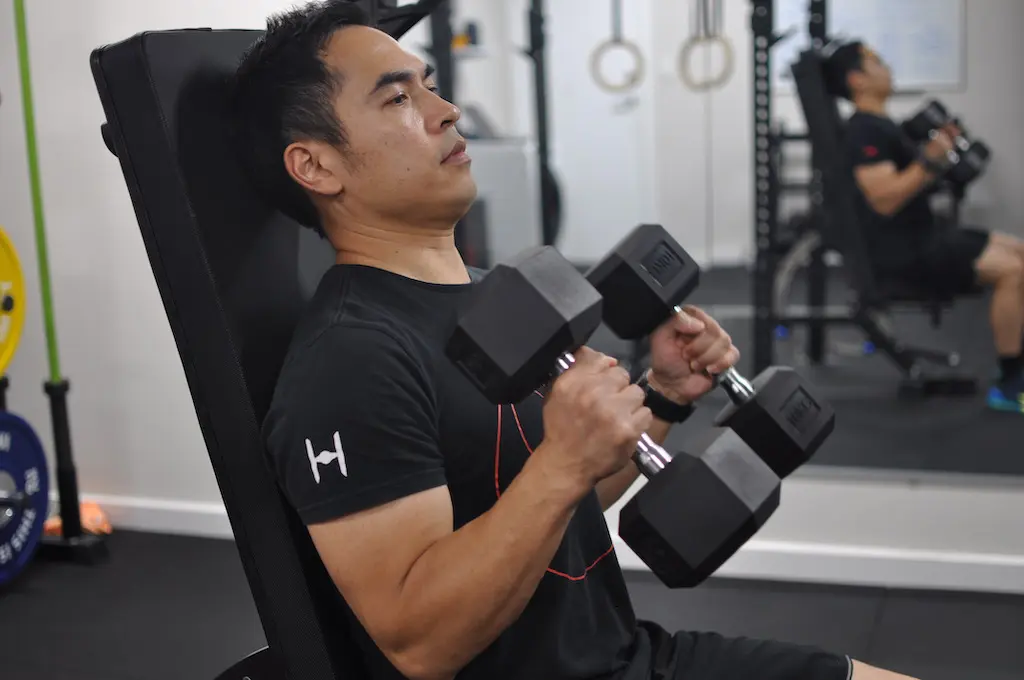
Hammer curls are a popular permutation of the biceps curl and one of the resistance exercises proven to shape and build the anterior upper arms. They have a lot of advantages, not the least of which is the number of ways you can do them. We counted 20 hammer curl variations, varying by type of equipment you can use, rep scheme, and stance.
All hammer curl variations are especially useful for working the muscles around the elbow and forearm, whether it’s bulk you want, or just shape and tone.
As opposed to the palms-up bicep curl which mainly recruits the two biceps heads, hammer curls on the other hand, additionally work the brachioradialis a bit more because it is aligned perpendicular to gravity. As a result of this, hammer curls are great for developing overall arm mass.
Regardless of what equipment you have or don’t have, there will no doubt be a way for you perform a hammer curl one way or the other!
Each variation has its own advantages and disadvantages and today we detail every single one of them for you.
| Also Known As | Neutral Grip Biceps Curl |
| Primary Muscles | Brachioradialis |
| Secondary Muscles | Biceps brachii, Brachialis |
| Movement Type | Strength |
| Movement Mechanics | Isolation |
| Level | Easy |
| Equipment Required | Any of: dumbbells, bench, resistance bands, hammer curl machine, tricep bar, barbell, weight plates, kettlebell, TRX suspension trainer |
Hammer curls deliver the same basic exercise benefits as palms-up biceps curls. The differences are subtle. Once you understand the nuances, you’ll be empowered to insert them into your workout routine in ways to get the most from them.
The same muscles work; the physiology of the muscles, tendinous insertions, and forearm rotation are what subtly differentiate the hammer curl from other types of curls.
We’ll call out what we think are the three stand-out benefits. They’re all related to the natural orientation of the hand and forearm during the hammer curl:
Hammer curls work the biceps brachii (long and short heads), brachialis, and brachioradialis. These are the very same muscles worked by traditional barbell or dumbbell curls.
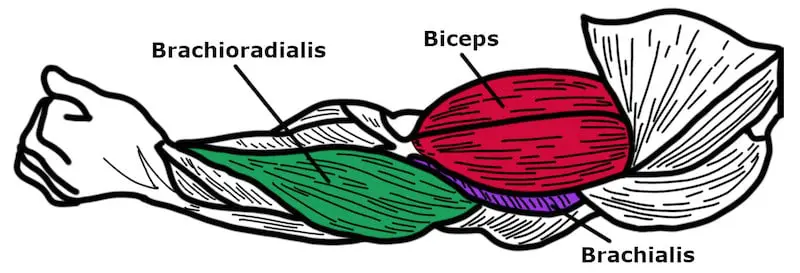
These three muscles are responsible for flexing the arm to bring the hand closer to the body. That the hand happens to be turned a different direction makes very little difference.
The thumbs-up grip orients the large upper forearm muscle, the brachioradialis, against resistance during a hammer curl, which preferentially loads it a bit more than a standard palms up biceps curl. Not much, but some.
In a traditional curl, resistance is somewhat oblique to the brachioradialis, whereas in the hammer curl, the brachioradialis is aligned with resistance.
That direct line of force makes the hammer curl an exercise of choice if your objective is upper forearm development (even though regular curls also develop upper forearms as well).
The hammer curl grip puts the hand, wrist, and forearm in their natural position, where the palms face the thighs. That natural orientation of the hand and forearm put the whole arm into a comfortable anatomical position.
Also, because the biceps tendon inserts onto the radius of the forearm, that same thumbs-up grip slightly shortens the stretch on the biceps tendon. Again, this contributes to a natural feel during the curling motion, without sacrificing overall upper arm development.
The natural feel and motion path of the hammer curl enables you to lift heavy weights, making hammer curls a logical accessory exercise for strength athletes, especially competitive bench pressers.
All hammer curl variations work the same muscles: the biceps brachii (long and short heads), the brachialis, and brachioradialis.
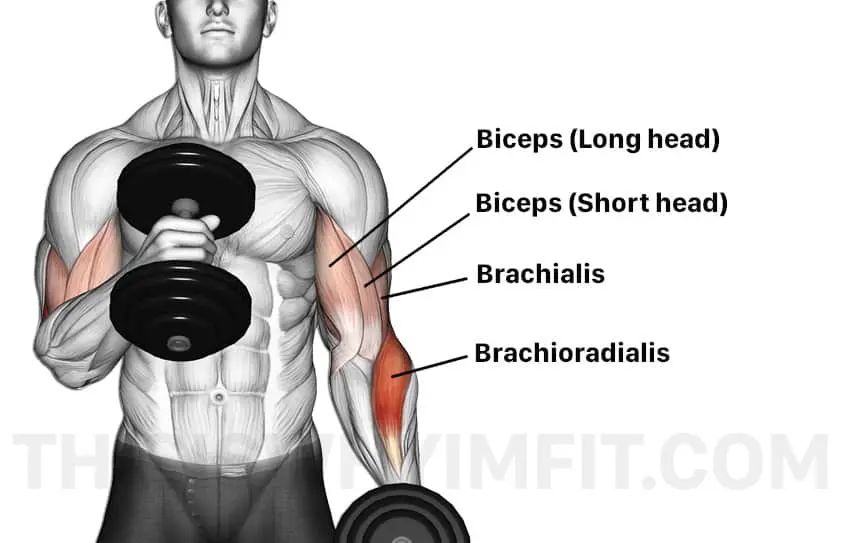
These three muscles are arm flexors, meaning that they bend the elbow and functionally, they work to bring the hand nearer the body.
For that reason, any arm curl also works these same muscles. The grip makes some difference on which of the three biceps muscles get more focus.
Hammer curls use that neutral “thumbs-up” grip where the palms stay facing the body and not up toward the ceiling or down toward the floor.
It is a very natural, comfortable way to do a curl, since it’s the position of the hand as we stand at rest – palms facing in and thumbs facing forward.
AAU Mr. Olympia Doug Brignole–who studies and has written extensively on the biomechanics of resistance exercise–says that the hammer style curl divides the work at about 70% brachio-radialis to 30% biceps. A standard palms-up curl by comparison would be closer to 90% biceps and 10% brachio-radialis. The brachialis gets the same amount of work with either grip due to its anatomical position.
As we move into the specific hammer curl variations, there are additional variables at play which affect the effectiveness of the particular variant and how well the arm muscles are utilised. Although all hammer curls recruit the same muscles, some variations do so better than others.
We rated each hammer curl variation based on three criteria:
These are the three main criteria that most easily separate the great variations from the “meh”.
There are more than a dozen criteria that can and should be used to evaluate an exercise, including its injury risk.
Range of motion is another more obvious criterion. For our purposes here, we limited our criteria to just the three above. Leave us a question if you want more info on this.
We’ve divided the list of hammer curl variations into three sub-categories:
Dumbbells and cable machines work best for muscle growth. If you do have dumbbells or a cable machine, these are the variations to do.
We’ve added a separate category later in the article for alternative equipment, when neither dumbbells nor cables are what you’ve got handy.
As we’ve said, the muscles worked are the biceps brachii, the brachialis, and the brachio-radialis. For our purposes in this article, we’ll refer to all three simply as “biceps”.
Here they are, ranked in descending order of effectiveness:
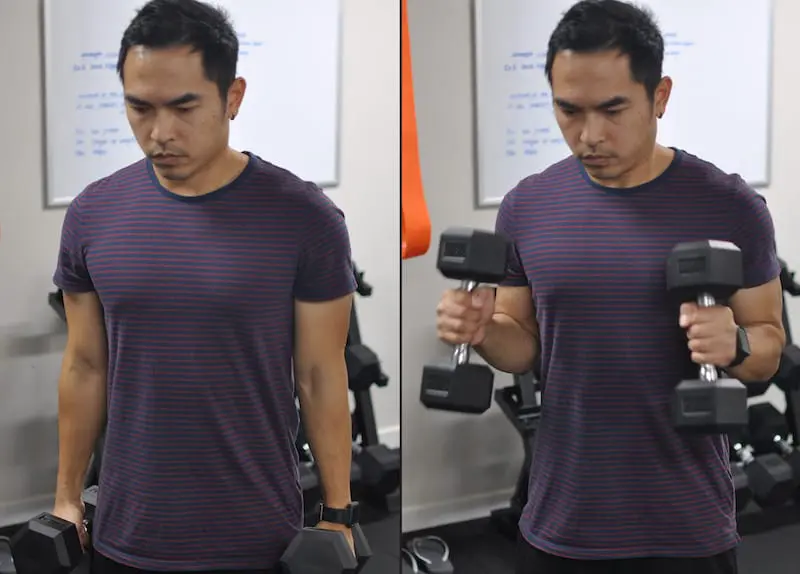
Simple. Comfortable. Easy to do. The traditional dumbbell hammer curl is the staple and for good reason. It works.
You can do it seated or standing. Doing them seated makes cheating a little more difficult, so if you’ve got to pick, do them seated.
You can also do them both arms simultaneously, or alternating arms. Same exercise.
Here’s how to do a traditional dumbbell hammer curl for biceps isolation:
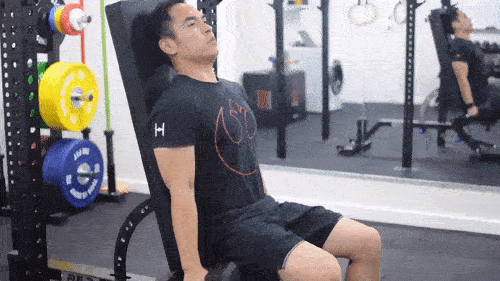
Bro Tip: Finish with a squeeze at the top, which will be up near the front of your shoulder. That little extra squeeze at the top won’t feel like much on reps 1 and 2, but you’ll notice it for sure on reps 11 or 12.
OUR RATING
| Ease of performance | Standing, seated, simultaneous, alternating. Natural anatomical pathway. | A+ |
| Direction of resistance | Gravity is down and the movement is straight upward against that. | A+ |
| Resistance curve | The movement is toughest when it needs to be for optimum muscle stimulation. | A |
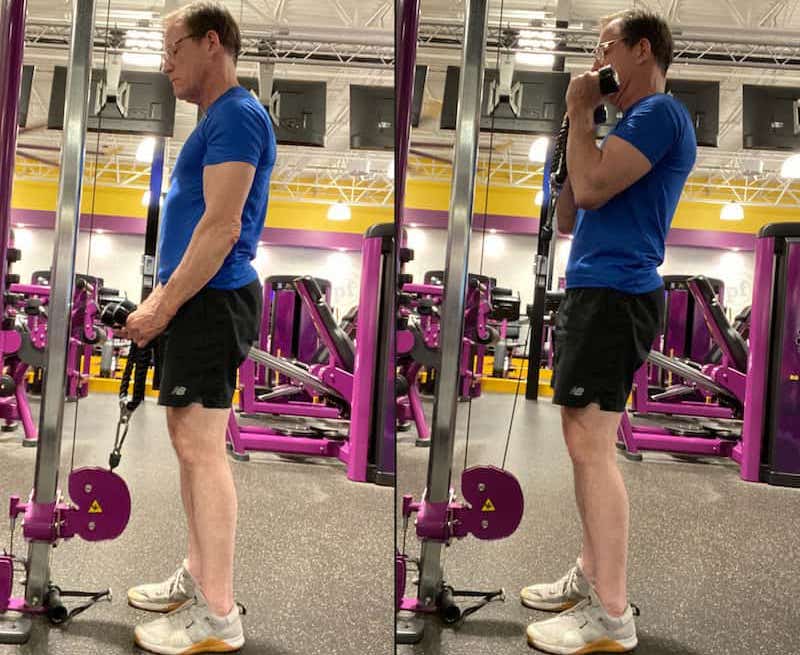
The only reason cable hammer curls aren’t tied for Number One with the traditional dumbbell hammer curl is that they’re not as easily performed. Handles aren’t as straightforward, and seated can be an issue if you’ve not got the right equipment set-up.
Other than those inconveniences, cable hammer curls are fantastic because the cable maintains a constant absolute tension on the muscle. It is possible to set up the exercise to ruin this advantage. But if you set it up properly, the cable hammer curl will humble you at the same time it grows your arms.
Cables offer a selection of handles and stances. One popular way to do them is with a rope, and also lying supine (on your back), which is a great way to prevent cheating.
Here’s how to do a proper cable hammer curl. We’ll describe the standing set-up using one arm at a time:
To perform the Lying Hammer Curl variation:
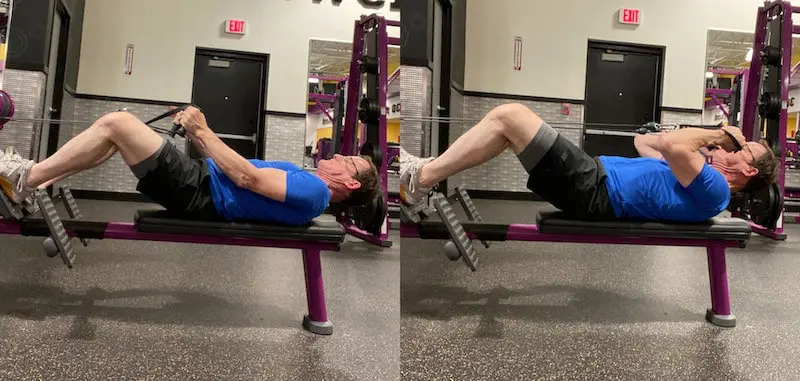
Bro Tip: Play around with stance, cable handles, and pulley set-up to find a set-up that’s most comfortable. Find a set-up that makes the most of the constant load possible only with a cable machine.
OUR RATING
| Ease of performance | Easy to set up and perform, once you get the hang of it. Sitting is not much of an option. | A |
| Direction of resistance | The machine lets you position the direction of resistance for optimal overload. | A+ |
| Resistance curve | It doesn’t get any better. Resistance stays constant beginning to end. The Lying version offers the slight advantage of preventing any cheating by the upper body. | A |
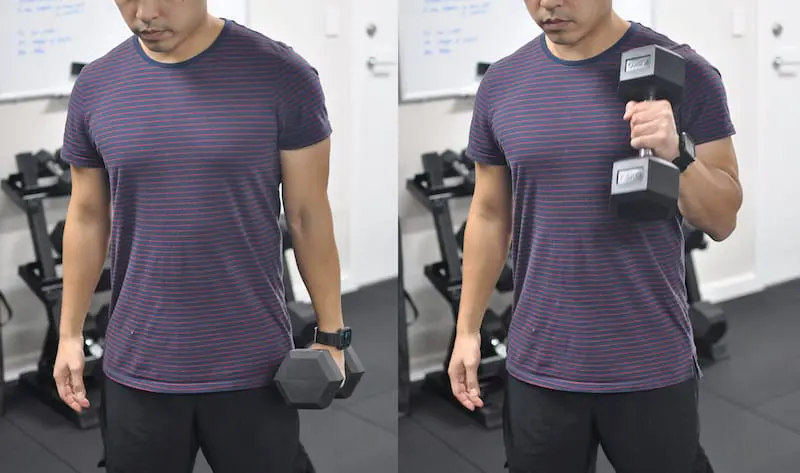
Single arm hammer curls use a dumbbell or cable to perform one whole set with a single arm before swapping to the opposite arm, not to be confused with the alternating left-right-left cadence possible with dumbbells.
Single arm hammer curls make an excellent variation when…
You can use dumbbells or cables to do single arm hammer curls. Here’s how to do one:
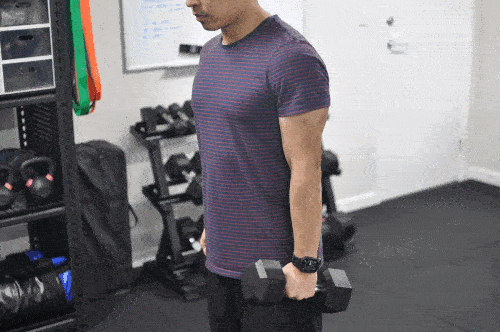
Bro Tip: Opt for a dumbbell and perform seated to keep your form righteous as the working side begins to fatigue.
OUR RATING
| Ease of performance | What could be simpler? The only challenge is keeping strict form toward the end of a set. | A |
| Direction of resistance | Each arm works directly against gravity for nearly the complete range of motion. | A+ |
| Resistance curve | The target muscles must work early and consistently bottom to top of each rep. | A |
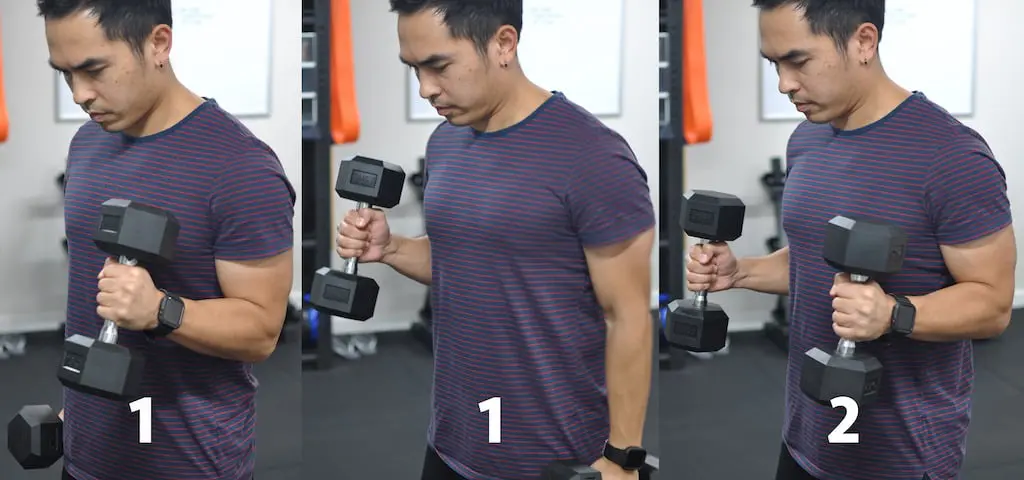
With a pair of dumbbells, curl the right arm, curl the left, then both together. That’s one 1 1 2 Hammer Curl.
A set of 1 1 2 hammer curls are really three sets in one. They’re a cool way to fake yourself into doing more arm work. They are a type of extended set, designed to inflict as much overload as possible within the confines of a single set.
Here’s how to do a set of 1 1 2 Hammer Curls:
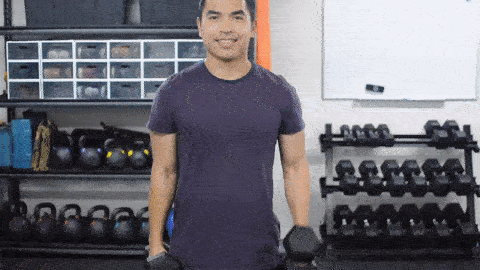
Bro Tip: Put 1 1 2 hammer curls at the end of arm day. The 1 1 2 is about fatigue so don’t lead off with them unless it’s the only biceps exercise on the schedule for that day.
OUR RATING
| Ease of performance | The form is easy but fatigue can tempt good form deep in a set. Requires concentration to keep the form strict. | A |
| Direction of resistance | Each arm works directly against gravity for nearly the complete range of motion. | A+ |
| Resistance curve | Same advantage as the traditional dumbbell hammer curl. You’re lifting against gravity. Only cables beat dumbbells in this dimension. | A |
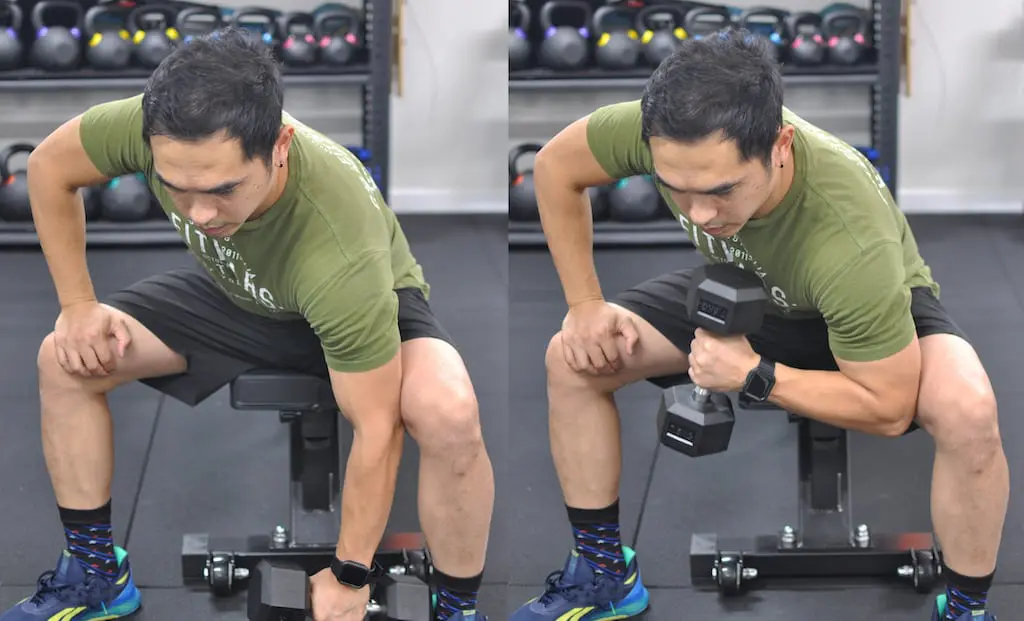
The hammer concentration curl is simply a classic concentration curl turned thumbs up. Hammer concentration curls require the use of a dumbbell. The elbow of the working arm rests against the inner thigh.
The advantage of a hammer concentration curl is this backstop provided by the leg. Makes cheating hard.
To do a hammer concentration curl:
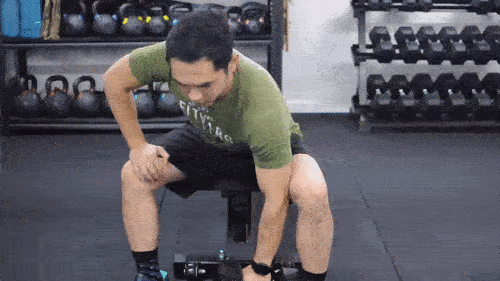
Bro Tip: Form, form, form. Focus your eyes on the working arm. This is called a concentration curl for a reason. Be disciplined and move the forearm only, isolating the target muscles.
OUR RATING
| Ease of performance | The form with all but light dumbbells can make these a challenge. The dumbbell needs a clear path and space can get tight in that concentration stance. | A- |
| Direction of resistance | Gravity is down. The dumbbell must move up. You work directly against resistance. | A |
| Resistance curve | The biceps have to work a little extra hard at the top because the dumbbell can’t “come over the top” and the shoulder can’t dip underneath to offer help. | A |
The Cross Body Hammer Curl is done from a standing position and almost always with dumbbells. Cable cross bodies are possible but it changes the form somewhat.
The dumbbell is curled up from the side and across the chest with the finish position being near the opposite (ipsilateral) side collar bone.
Cross body hammer curls follow a slightly different path than traditional dumbbell hammer curls. A traditional hammer curl keeps the forearm at 90° to the body. The forearm hugs the body from bottom to top in the cross body variation.
There’s debate over whether the cross body preferentially works the long head of the biceps. This is difficult to support biomechanically because both heads of the biceps insert at the same location on the forearm.
It’s impossible to work one head of a two-headed muscle because they share a tendon. The tendon is where the muscle attaches and where it exerts force. It cannot exert force contrary to its attachment.
Do a cross body hammer curl if it is a more comfortable variation for you. Cross body hammer curls may allow some lifters to do a stricter hammer curl; there’s not the same opportunity for cheating with elbow position.
To do a cross body hammer curl:
Bro Tip: If you have hex head dumbbells handy, opt for these over disc style. You’ll be able to keep the dumbbell closer to your body through the range of motion.
OUR RATING
| Ease of performance | Physiologically there’s no unique benefit to the cross body hammer curl aside from comfort. Disc-style dumbbells don’t allow the forearm to track along the body as easily as hex or ball-form dumbbells do. Traditional hammer curls are simpler to perform and the same muscles get the work. | B |
| Direction of resistance | As with other dumbbell hammer curl versions, you must lift opposite gravity, and that’s a good thing. | A |
| Resistance curve | The biceps stay loaded for almost the entire range of motion. | A |
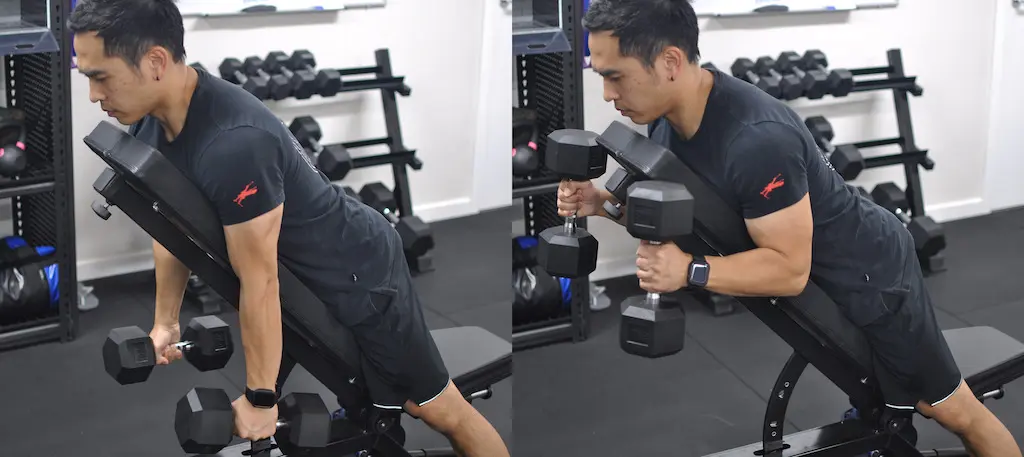
Spider hammer curls are performed lying chest down on an incline (or decline) bench, where the shoulders are higher than the feet and the arms can hang at length without touching the floor.
Because of the lying posture, cheating with momentum is eliminated. The arms are forced to do all the work. Cheating *is* still possible, just not by using the legs or upper body to help move the weight.
Dumbbells are required.
To do a spider hammer curl:
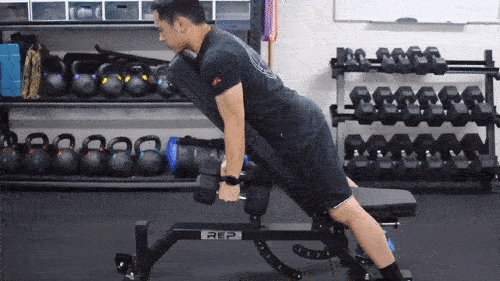
Bro Tip: Avoid the tendency for the elbows to drift backward, creating a hinge motion. Technically, hinging at the elbows still works the biceps, but it shortens the range of motion because the upper and lower arms move toward one another. Create one long, sweeping arc with the forearms.
OUR RATING
| Ease of performance | It takes an experienced lifter who can monitor their own form to keep the upper arms from getting involved. Set-up can be a little tricky. As the weights get heavier, getting set on the bench can be a bit of a pain. | B- |
| Direction of resistance | No problem here. Gravity is down and motion is up. | A+ |
| Resistance curve | With stationary upper arms, the target muscles get an intense load, peaking as the forearms approach parallel to the floor. | A |
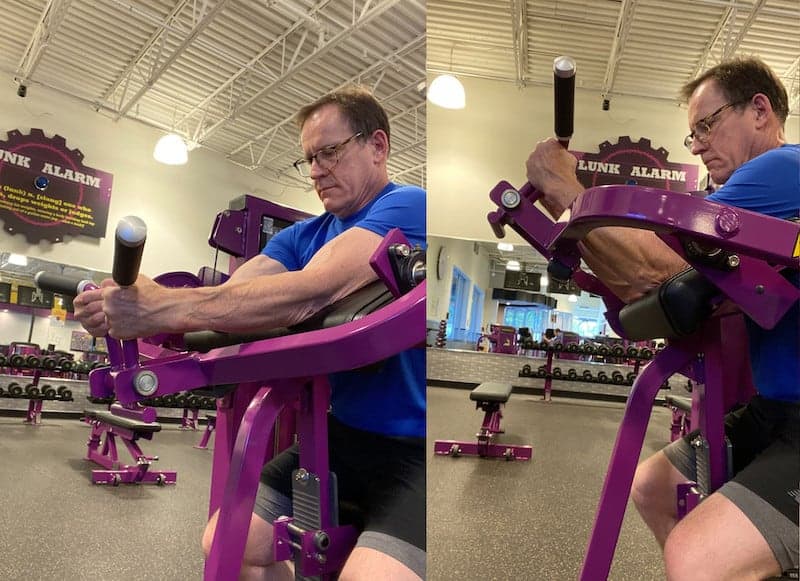

Machines remove much of the guesswork from any exercise. At least they should. Design plays a central role in how good a given brand is for a particular exercise.
Big-box commercial gyms sometimes offer several machine brands. Cool, because it gives you a choice.
Ergonomics also plays a large role. Some machines are–regrettably–designed with more thought to user appeal than to how well they mimic or improve exercise form.
One brand in particular includes a seat that moves as you exercise, turning the machine into more of an amusement park ride than a useful resistance training implement.
Rule of thumb is to look for a machine that addresses the criteria we mentioned earlier: ease of performance; direction of resistance; and resistance curve.
When deciding if a hammer curl machine is for you, pay special attention to direction of resistance. Pulleys and cams can fake you out.
Try the machine using a weight that’s light enough for an experiment yet heavy enough to feel. Do a thumbs-up curl (aka hammer curl, duh). Concentrate and ask yourself:
The answer to all three should be “yes” to all three of these questions.
Most hammer curl machines feature a preacher bench pad. The risks of the preacher curl–even with a hammer group–are real. Preacher curls, and preacher hammer curls to a lesser extent, have earned their reputation for biceps tears.
To use a hammer curl machine:
Bro Tip: Machines make pyramid and drop sets easy. All you have to do is reach over and reset the pin, or turn the intensity dial found on the top of the stack of some brands. For a drop set, start with a heavier weight for lower reps. When you can’t do another rep with proper form, lower the weight and repeat. Reset the pin to ever-lighter weights until you’re at the lightest weight, and rep to volitional failure.
A pyramid is starting light going up to heavy and back down again.
OUR RATING
| Ease of performance | In general, machines make the exercise easier to do properly. | A |
| Direction of resistance | Also usually very good. Resistance is direct against the working muscles. | A |
| Resistance curve | This is where machines could really shine. Unfortunately for us hammer curl advocates, most machines feature the preacher pad and not a vertical one, which would optimise the resistance curve. A machine could take full advantage of a constant resistance curve, early through late phase. Unfortunately, many load the starting phase too much when the muscles and tendons are fully stretched to capacity, and that can lead to injury. | B |
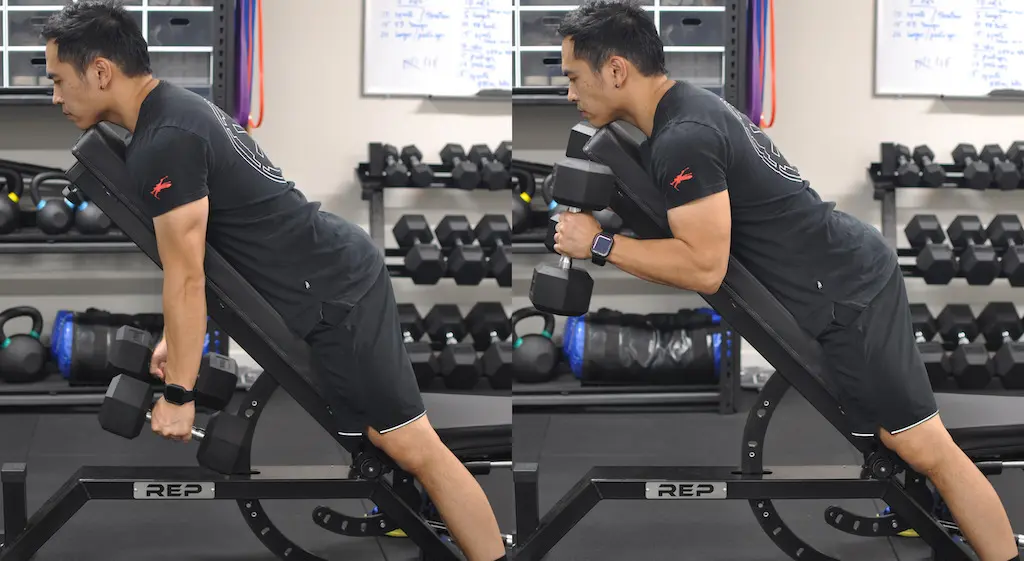

Decline hammer curls are a variation of dumbbell hammer curls where the lifter lies chest down on an incline bench or board with the arms hanging straight down toward the floor at the beginning of the curl.
Decline hammer curls are almost identical to spider hammer curls, which are performed from the vertical side of a preacher bench and can be done leaning against the angled side of a preacher bench. The decline hammer curl requires reclining, facing downward.
To do a decline hammer curl:



Bro Tip: Due to the hassle of setting up, use decline hammer curls as a finisher at the end of an arm day, or as your arm exercise on secondary arm days.
OUR RATING
| Ease of performance | Setting up the bench and loading up for the exercise is inconvenient and a hassle-prone. Any net benefit of lying face down is negated. | B- |
| Direction of resistance | Like a traditional hammer curl, gravity is down and you’re curling straight up. Good stuff. | A |
| Resistance curve | Also fine. The exercise is early phase loaded and stays challenging throughout as long as good form is observed. | A |
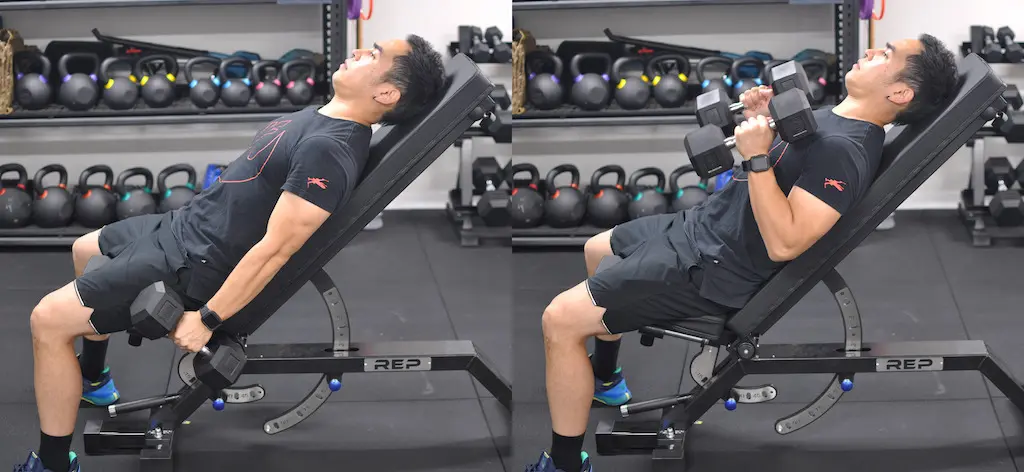

Incline hammer curls are a slight variation of a seated dumbbell hammer curl, performed on an incline bench. The incline stretches the biceps when the arms are extended in the down position.
Overstretching can lead to overuse injury. Stretch is good, too much is bad.
It’s important to distinguish how the incline affects all the involved muscles. The steepness of the incline and recline of the lifter dictates how much stretch is on the biceps, but not the brachio-radialis.
Here’s how to do an incline hammer curl properly:
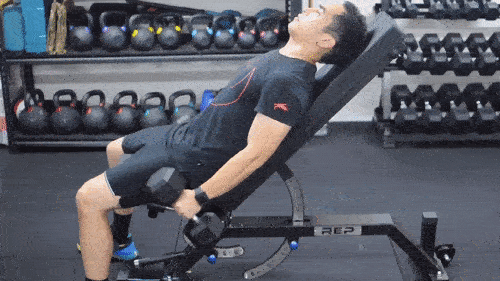

Bro Tip: Pay close attention to your anterior shoulders the day after incline hammer curls. If they’re sore, and you didn’t work anterior delts or chest the day before, you’re setting the bench too far back. Our advice: opt for a seated hammer curl with no incline if that’s the case.
OUR RATING
| Ease of performance | Easy set-up, and the bench helps prevent cheating. | A |
| Direction of resistance | By now, you know our opinion on working directly against resistance. Gravity is down, the motion is up. Simple. | A+ |
| Resistance curve | Dinging incline hammer curls a point or two simply because it’s easy for a novice to set the bench for too much stretch. Early phase loading is good, but overstretching is unnecessary and can make your workouts miserable. | A- |
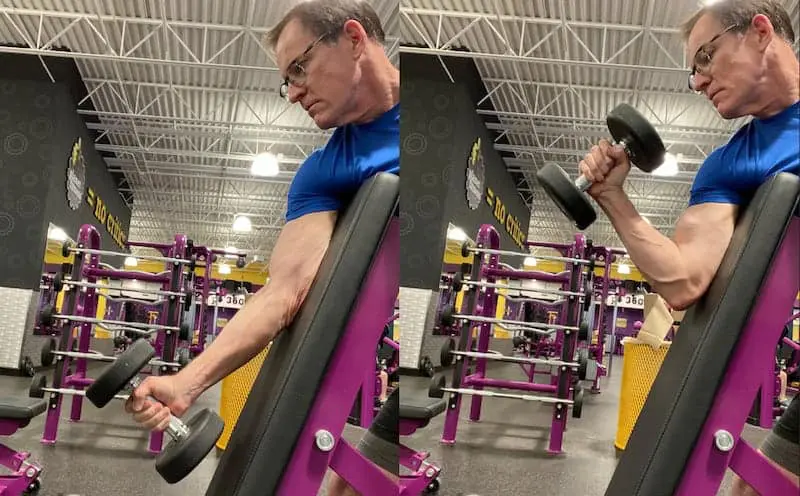

Preacher hammer curls are a variation of dumbbell hammer curls, performed on a Preacher bench. In short, a preacher hammer curl is a hammer curl done thumbs-up from start to finish.
The preacher angled side of the bench places the arm in a position which heavily loads the beginning of the rep at the bottom of the rep.
There’s a higher risk of injury than some hammer curl variations. Just Google “preacher curl biceps tears”. Not recommended for weak stomachs.
To perform a preacher hammer curl:
Bro Tip: Look for preacher benches with steeper incline pads so that the intense beginning load is diminished a bit.
OUR RATING
| Ease of performance | Easy set-up, and the bench helps prevent cheating. | A |
| Direction of resistance | Gravity is indeed down, which opposes the motion. So that part is good. Problem is that all biceps work is done just past a half range of motion. Not good. | B- |
| Resistance curve | The lift is most difficult at the very beginning when the biceps and tendons are fully stretched, and depending on the set-up, almost hyperextended. Way more than necessary to load the muscle for growth. The net benefit from putting your biceps tendons at risk of injury just isn’t worth it. | C |


In Out hammer curls are a variation of the traditional dumbbell hammer curl that consists of a traditional dumbbell hammer curl followed immediately by one where the dumbbells are held out to the side.
One rep consists of one “in” (traditional form) and one “out” (hands out to the sides). An “In” plus an “Out” equals one rep.
Whether intended or not, the In Out hammer curl also involves the shoulder joint somewhat as it rotates the upper arm bone to the side for the “Out“ portion.
It is technically two reps in one and not two half-reps, so it doubles the work, making it more-or-less a higher rep set. Exactly the same muscles work in exactly the same way as traditional hammer curls.
Here’s how to do In Out hammer curls:
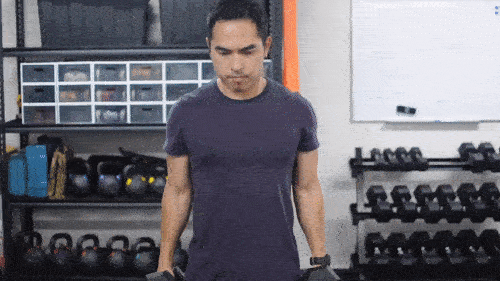

Bro Tip #1: Experiment with these and gauge your results. If after a few workouts, you notice results, stick with them if you like them. If your shoulders are sore the next day with no other explanation, relegate In Out hammer curls to your exercise scrap heap and don’t look back. There’s no benefit beyond finding a way to do more reps. In our opinion, they’re a gimmick, and that’s why we rate them last.
Bro Tip #2: If you’re new to the lifting game, you will get “newbie” gains regardless. It would be unwise to credit any particular exercise with the gains you get when you first start resistance training. If an experienced lifter breaks a plateau with In Out Hammer Curls, rock on.
OUR RATING
| Ease of performance | Getting the hang of a traditional hammer curl followed by one to the side isn’t difficult. | A- |
| Direction of resistance | As with traditional hammer curls–which we love–you work directly opposite resistance. | A |
| Resistance curve | The resistance curve is like a traditional hammer curl, early phase loaded and fairly constant throughout the range of motion. | A |
Dumbbells and cable machines are best for hammer curls because the range of motion, direction of resistance, and resistance curves create the best conditions for muscle overload and growth.
Don’t skip hammer curls if you don’t have dumbbells or cable machines handy. There are six versions using alternatives to DBs and cables that can do in a pinch.
Any of these will work the target muscles if done properly, just not as optimally as DBs and cables. In descending order of effectiveness, they are:
The tricep bar (correctly written and said “triceps”) tops our list because it most closely mimics our favorite, the dumbbell hammer curl and works the target biceps, brachioradialis, and brachialis in isolation.
The tricep bar’s construction makes this possible with its perpendicular handles, which allow for the neutral thumbs-up grip.
Tricep bars have been around for a while. Recently, a few manufacturers have introduced multi-grip bars that are bigger, heavier, and feature more handles to adapt to different shoulder widths.
To use a tricep bar (or multi-grip bar) for triceps hammer curls:
Bro Tip: Keep your chin up to avoid plinking yourself with the bar at the top of each rep. It’s real.
OUR RATING
| Ease of performance | A tricep bar makes set-up easy. It doesn’t do much to prevent cheating through using momentum to hoist the weight. | A- |
| Direction of resistance | Same assessment as before. Gravity is down, you’re curling up. Good. | A |
| Resistance curve | The tricep hammer curl is early phase loaded and keeps the load on the working muscles through the range of motion until the very top. | A |
Barbell hammer curls use a straight barbell and wrist straps like the ones you’d use for deadlifts and shrugs. By wrapping them around the bar and gripping the free end, you can make yourself a handle that transforms a plain barbell bar into a hammer curl appliance.
The straps add fiddle factor to exercise set-up. If you can overlook that inconvenience, having only a straight bar and no dumbbells, this is a clever way to MacGyver for a hammer curl.
Once you’ve got a straight barbell and a pair of well-made wrist straps, follow these steps to securely perform barbell hammer curls:
Bro Tip: Use the vertical side of a preacher bench so that you can lean forward a bit to prevent the bar from hitting your forearms at the top of the ROM.
OUR RATING
| Ease of performance | Setting up for barbell hammer curls is a genuine pain, and once you do, straps make for a poor handle. You’ll concentrate more on just hanging on than the muscles you’re trying to work. | C- |
| Direction of resistance | You lift in direct opposition to resistance. The bar will stay low, so as you near the top of the range of motion, the bar will swing under your hands. At the very top, it will contact your forearms. This sets up a weird dynamic where the lifter adjusts their arms to compensate. DoR is still positive, just weird. | A- |
| Resistance curve | The barbell hammer curl is early phase loaded and maintains the load through almost the entire range of motion. | A |
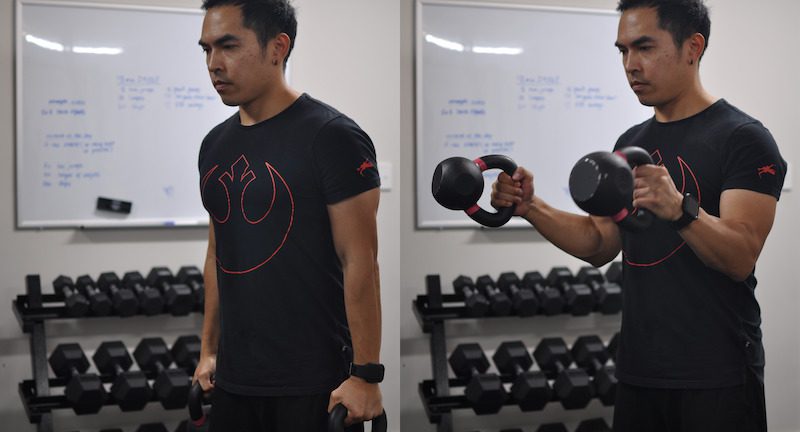

Kettlebell hammer curls, as their name suggests, require the use of a kettlebell. Kettlebells add challenge to a hammer curl: the kettlebell handle places weight out in front of the fist, lengthening the lever arm. That added length using a 10kg kettlebell requires ~14kg of force to curl it.
The weight itself is suspended out in front of the fist, which places greater demand on grip strength than do other hammer curl versions.
How to do a kettlebell hammer curl:
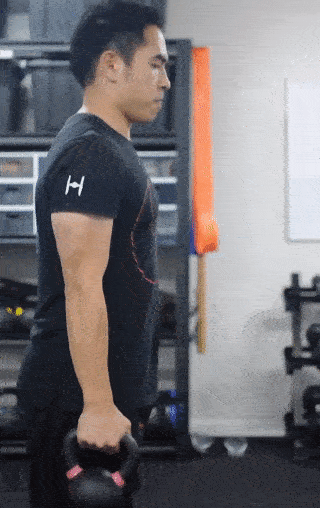

Bro Tip: If you have access to newer kettlebell designs that have poly grips, or with wedge designs, opt for those. They’ll make the grip easier.
OUR RATING
| Ease of performance | Holding a kettlebell puts more emphasis on grip than the target muscles. | D |
| Direction of resistance | You lift in direct opposition to resistance. The kettlebell will stay low, so as you near the top of the range of motion, the kettlebell will swing under your hands. At the very top, it will contact your forearms. This sets up a weird dynamic where the lifter adjusts their arms to compensate. Direction of resistance is still positive, just weird. | A- |
| Resistance curve | Pretty good. The longer lever (effort) arm created from the kettlebell position in space loads the target muscles from start to finish. | A |
This is a convenient option if your equipment is barbells and barbells only.
Instead of a handle grip like dumbbells provide, plate hammer curls require that the lifter grasp the plate along its rim, or through grip holes that some brands include.
Plate hammer curls can be done with a single arm or two arm. They can be done with two hands holding a single plate, or each hand holding a single plate.
If using a single plate, you’ve got the option of alternating arms or simultaneous, two-arm curls.
How to use a plate for hammer curls:
Bro Tip: Use plate hammer curls as a “between-set” exercise when you’re doing other barbell exercises.
OUR RATING
| Ease of performance | Like the kettlebell hammer curl, ergonomics present a problem. You’re either limited to plate design or size. If your hammer curl strength suggests using more that 10Kg (22.7 lb.) per arm, you’re out of luck unless you’ve got 50kg (100 lb.) plates handy. | D |
| Direction of resistance | You lift in direct opposition to resistance. The kettlebell will stay low, so as you near the top of the range of motion, the kettlebell will swing under your hands. At the very top, it will contact your forearms. This sets up a weird dynamic where the lifter adjusts their arms to compensate. Direction of resistance is still positive, just weird. | A- |
| Resistance curve | Early phase loaded with a relatively consistent load through the entire arc of the curl. There’s some nuance here because the shape of the weight causes half of it to cross perpendicular sooner than, say dumbbells, so the range of motion for overload isn’t as long. | A- |
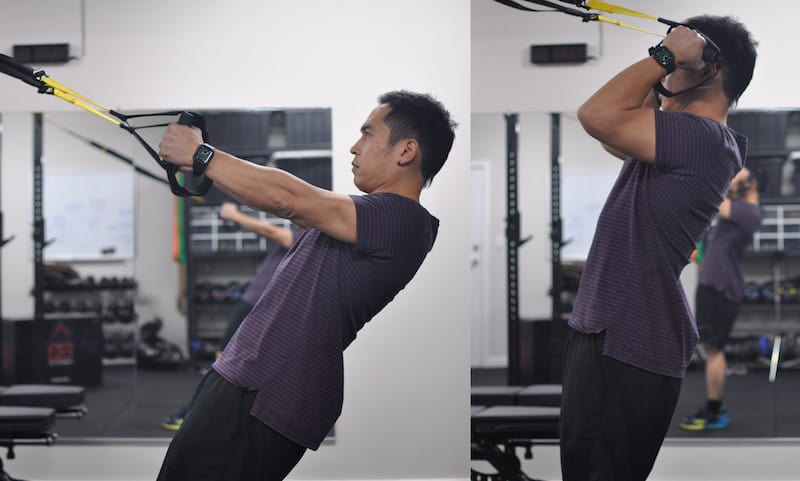

A TRX hammer curl is a TRX suspension trainer curl with a neutral grip. The trick is establishing and maintaining that neutral, thumbs-up grip on a suspension apparatus.
Like all TRX exercises, their difficulty can be progressed by moving the center of mass closer to the anchor point of the trainer. That’s a fancy way of saying that they get harder as you get closer to where you’ve secured the TRX.
Here’s how to set up and do a TRX hammer curl:
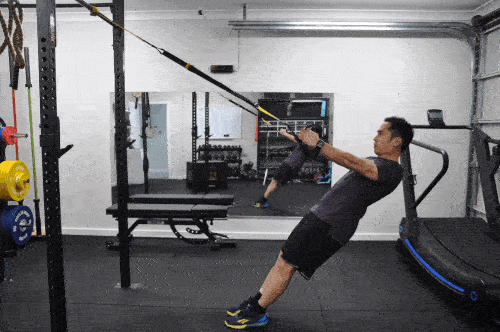

Bro Tip: Start from a nearly standing position and gradually step toward the anchor point to find the sweet spot where the exercise can be done correctly yet still challenging.
OUR RATING
| Ease of performance | You need experience with TRX (or other suspension trainer) to set up correctly for the hammer curl. Even then, maintaining the hammer grip is challenging to maintain through the entire exercise. | D |
| Direction of resistance | If you set up correctly, the direction of pull is against resistance. | A |
| Resistance curve | The exercise stays loaded beginning to end. | A |
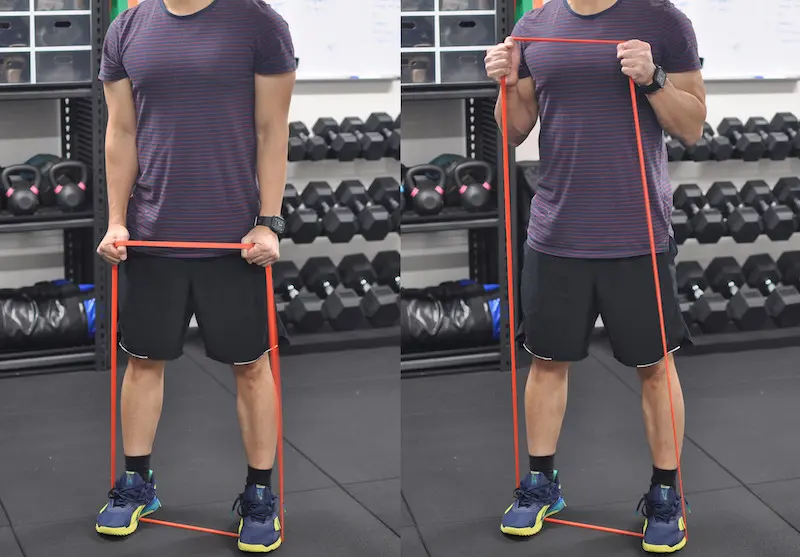

Resistance band hammer curls are a biceps curl alternative that utilizes a resistance band or elastic tubing.
The amount of resistance provided by bands and tubing varies depending on the thickness of the material. Lengths also vary and length influences your set-up for the exercise. You’ll need more floor space for longer tubes and bands in order to establish the starting tension.
Banded hammer curls can be done anywhere. No gym required. Bands and tubes make a nice on-the-road training tool for people who travel often.
How to do a banded hammer curl:
The same basic rules apply if you’re using tubing. Orient the tubing handles for the hammer grip and follow the same instructions.
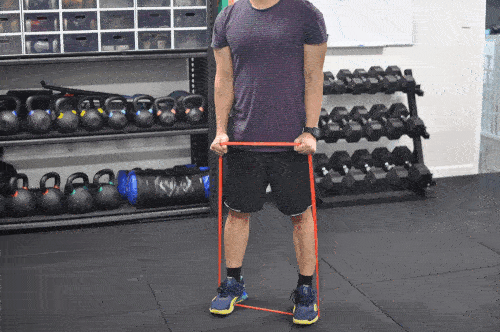

Bro Tip: Start from a nearly standing position and gradually step toward the anchor point to find the sweet spot where the exercise can be done correctly yet still challenging.
OUR RATING
| Ease of performance | Easy to set up and perform, once you get the hang of it. Sitting is not much of an option. | C |
| Direction of resistance | The machine lets you position the direction of resistance for optimal overload. | A- |
| Resistance curve | It doesn’t get any better. Resistance stays constant beginning to end. The Lying version offers the slight advantage of preventing any cheating by the upper body. | D- |
Hammer curls fit well in any resistance training routine. They can also be written into a physical therapy routine for post-surgery or proprioceptive training (sometimes mistakenly called “balance” training).
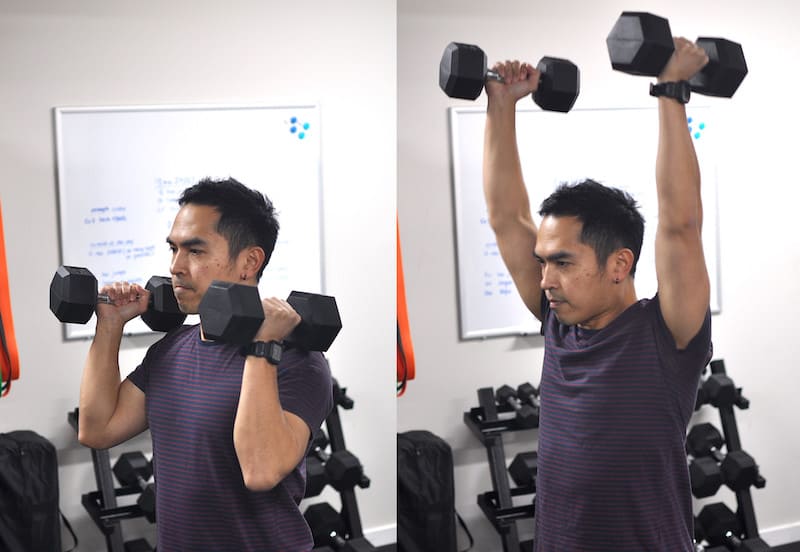

The hammer curl by itself is an isolation exercise useful for hypertrophy of the anterior upper arm muscles. Layman’s terms: they can jack your biceps and forearms.
Combining another movement with hammer curls into a single exercise adds absolutely zero to their biceps-building properties. If anything, adding another movement detracts from that effect.
But there are other applications, such as metabolic routines, where the objective isn’t exactly bodybuilding, it’s general fitness or energy expenditure. (We don’t and won’t say weight loss, because that involves kitchen discipline more than gym discipline.)
Hammer curl to press is simply adding a neutral grip overhead press at the top of each hammer curl. You interrupt the hammer curl with a press. This recruits an entirely different set of muscles during the overall movement.
To perform a hammer curl to press:
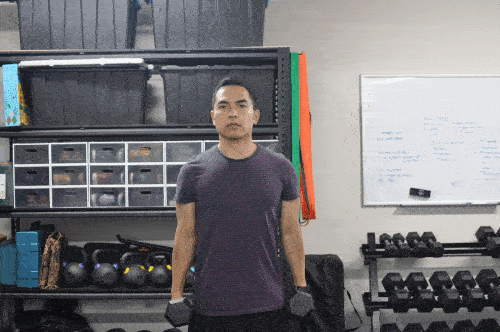

Again, no reason to not do hammer curl to press. Just know when to apply it for your specific training objectives.
Bro Tip: Program a hammer curl to press for clients who want work on overall body shape and condition. Extend the set for high reps to enhance the metabolic effect.
OUR RATING
| No rating on this exercise due to it being a special application in our evaluation. The downsides of the hammer curl to press for arm development is that the shoulders may tire before your arm muscles do, so achieving any appreciable overload for the arms gets iffy. |
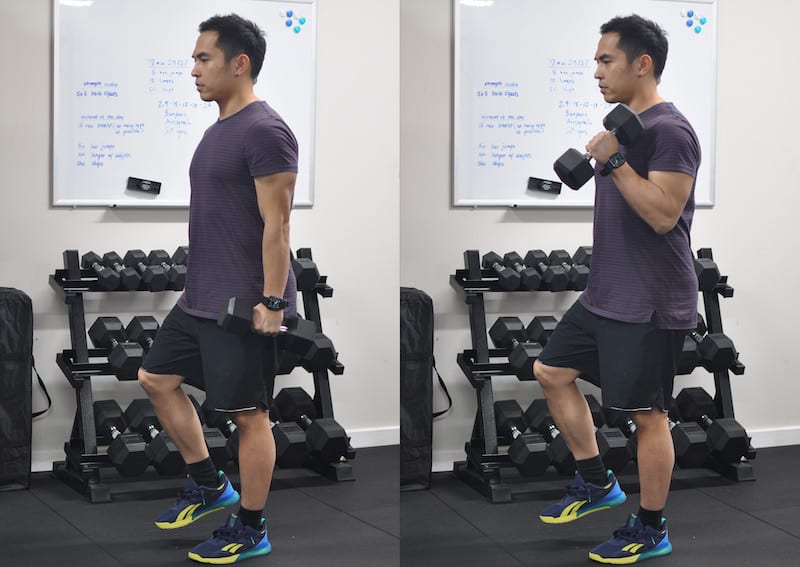

Single leg hammer curls sometimes show up in rehab routines for patients recovering from hip surgery. They’re a way to challenge the hips and core to stay engaged while challenging the upper body with some work.
The logic goes that the stabilizer muscles of the hip need to be sufficiently strong for proper walking gait.
Single leg hammer curls ARE NOT an arm hypertrophy exercise. Period.
To do (or supervise) a proper single leg hammer curl:
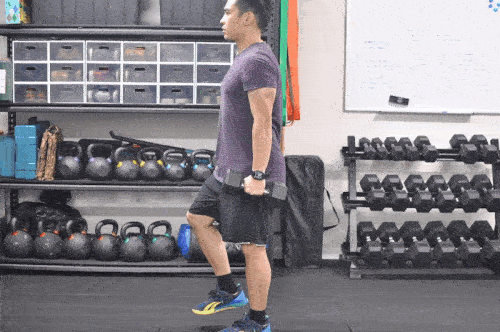

Single leg hammer curls are among the exercises that find their ways into gym fail videos everywhere. Outside of physical therapy, they gained some popularity as an outgrowth of functional fitness and a misguided trend to turn gym work into circus exhibitions.
Standing on one leg while curling anything other than a very light dumbbell is just, well, dumb. To challenge the arms for growth requires a secure base of support and standing on one leg doesn’t provide that.
Standing on one leg on an unstable surface while doing an arm curl is questionable, unless under specific supervision of a licensed physical therapist.
The instability created by a single leg plus unstable surface sets up conditions for lumbar spine injury. Any net gain of doing this exercise is far outweighed by its risks.
OUR RATING
| No rating on this exercise due to it being a special application in our evaluation. |
References: